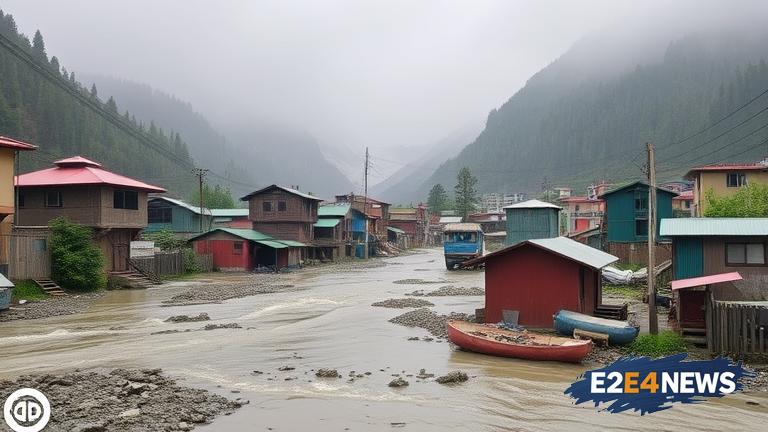The Gilgit-Baltistan region in Pakistan has been severely affected by recent rain and flash floods, resulting in massive losses estimated to be over Rs20 billion. The region’s infrastructure, including roads, bridges, and buildings, has been severely damaged, disrupting communication and transportation networks. The floods have also affected the region’s agriculture sector, with crops and livestock being destroyed, leading to a significant loss of livelihood for the local population. The regional government has sought assistance from the federal government to help recover from the disaster. The federal government has been requested to provide financial aid, as well as technical assistance, to help rebuild the damaged infrastructure and restore the region’s economy. The region’s residents are facing significant challenges, including lack of access to basic necessities like food, water, and shelter. The floods have also raised concerns about the region’s environmental sustainability, with the risk of landslides and soil erosion increasing due to the heavy rainfall. The regional government has initiated relief efforts, including the distribution of food and shelter to affected families, but more needs to be done to address the scale of the disaster. The federal government’s assistance is crucial in helping the region recover from the devastating effects of the floods. The disaster has also highlighted the need for long-term measures to mitigate the effects of climate change, which is exacerbating the frequency and severity of natural disasters in the region. The regional government has called for international assistance, including from the United Nations and other humanitarian organizations, to help respond to the disaster. The floods have also affected the region’s tourism industry, with many popular tourist destinations being closed due to the damage caused by the floods. The regional government is working to restore the region’s tourism industry, which is a significant contributor to the local economy. The disaster has also raised concerns about the region’s healthcare system, with the risk of waterborne diseases increasing due to the contamination of water sources. The regional government has initiated efforts to provide medical aid to affected families, but more needs to be done to address the scale of the disaster. The federal government’s assistance is crucial in helping the region recover from the devastating effects of the floods. The disaster has also highlighted the need for long-term measures to mitigate the effects of climate change, which is exacerbating the frequency and severity of natural disasters in the region. The regional government is working to implement measures to reduce the risk of future floods, including the construction of flood protection walls and the implementation of early warning systems. The federal government’s assistance is crucial in helping the region implement these measures and recover from the devastating effects of the floods. The disaster has also raised concerns about the region’s education system, with many schools being closed due to the damage caused by the floods. The regional government is working to restore the region’s education system, which is critical for the long-term development of the region. The federal government’s assistance is crucial in helping the region recover from the devastating effects of the floods and restore the region’s economy.
